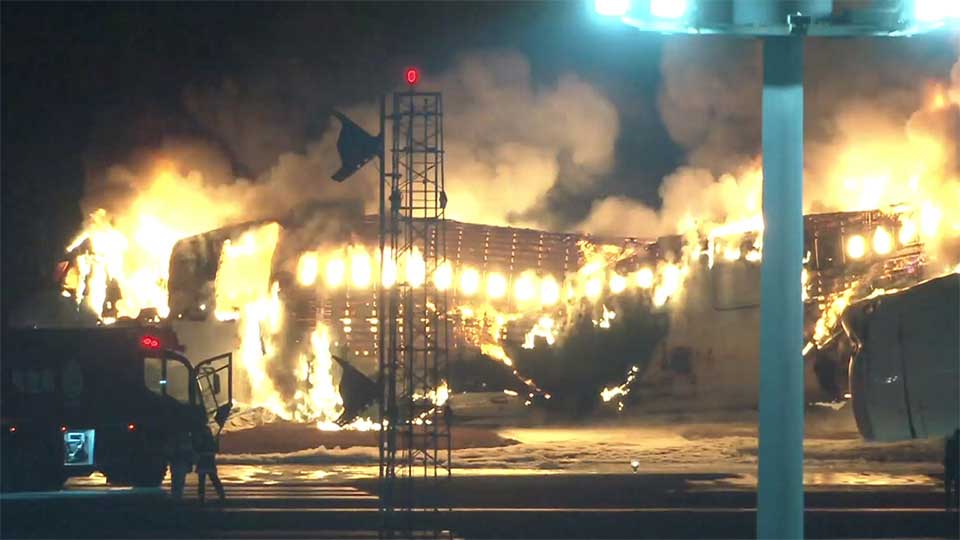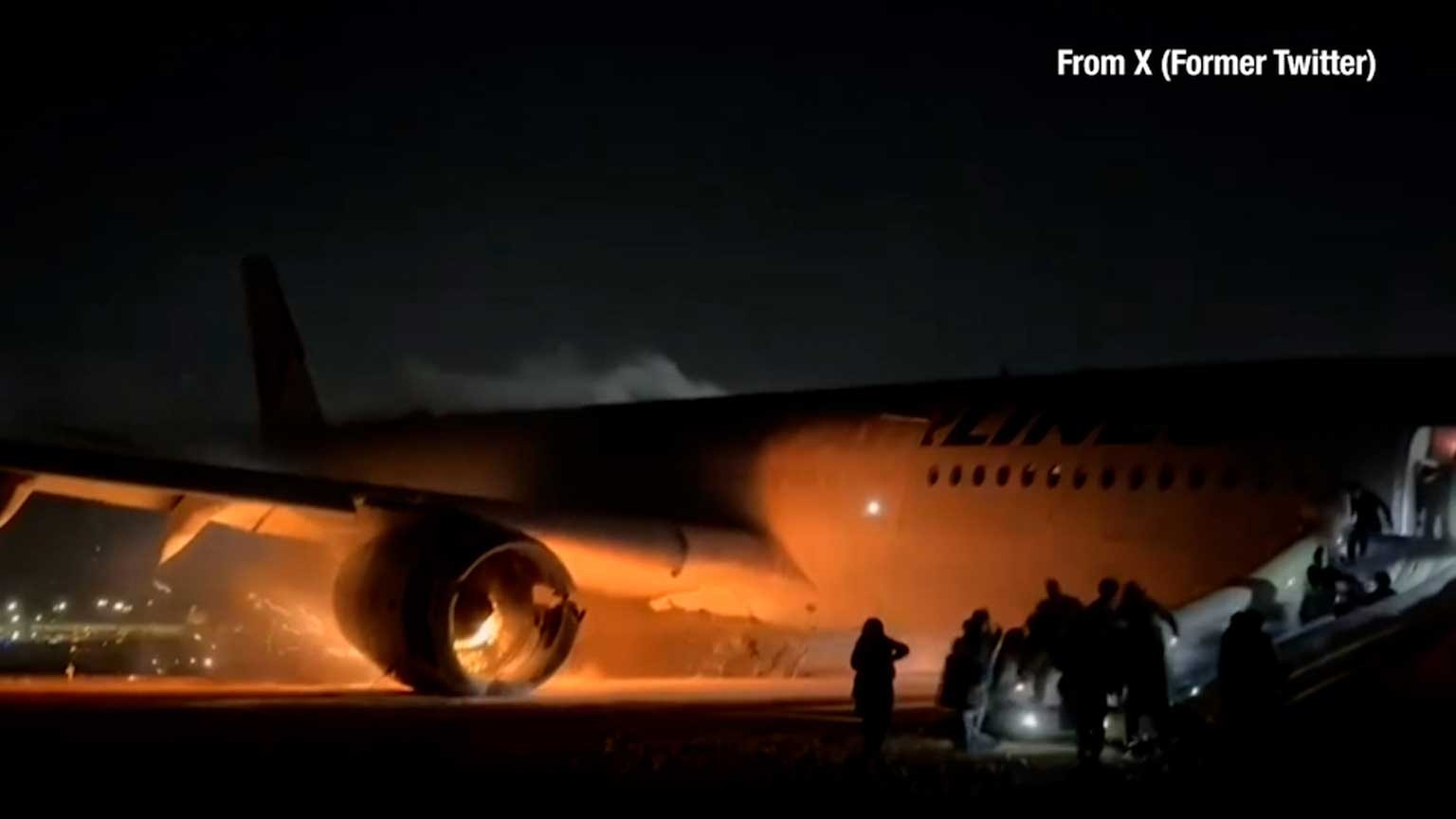
The two planes collided around 5:47 p.m. The passenger jet skidded along the runway for about a kilometer.
When it came to a halt, the pilots were initially unaware a fire had broken out.
But smoke began to fill the cabin.
One passenger said, "A lot of smoke was spreading from the front, and I only thought about not inhaling any."
Another described how cabin attendants were responding to the emergency.
He said, "Cabin attendants told us to stay calm, just as the manual says, I guess. We were told to abandon our belongings and evacuate."

Flight attendants made sure passengers left their personal items behind for a smooth evacuation.
The chief cabin attendant reported the fire to the cockpit.

The evacuation began from the two exits at the front, close to the cockpit. Five of the remaining six exits were blocked by fire, leaving only one emergency door at the left rear of the plane.
The cabin crew must have permission from the cockpit to open an emergency exit. But the intercom system at the rear of the plane no longer worked, making communication impossible. The crew opened the door on their own initiative.

Egami Izumi of the University of Tsukuba, a former JAL flight attendant, says the process of making decisions to open emergency exits is crucial. The first thing to consider is the fire situation. "If there's no fire in sight, it's safe to open the door. Then they will try to contact the captain again. But if they don't get through, the only way left is to open the door and evacuate."
She added that crew members practice over and over, including checking outside the exit for fire, or if the plane is surrounded by the sea.

The captain was the last person to leave the plane at 6:05 p.m. ... 18 minutes after landing.
The passenger added that "It seemed we were going down the emergency chute slowly and getting stuck, but someone helped by pulling me. And I also pulled others. My luggage must have been burned, though."
Egami says passengers' responses were also critical for the success of the evacuation. "I think the passengers were very cooperative. Almost nobody had any belongings with them while sliding down the chutes. It helped a lot that they followed instructions."

Egami said the crew's readiness for any contingency resulted in the safe evacuation. "I think it must have been very difficult for the crew to evacuate everybody using only three exits." She said crew members take part in annual emergency drills, and they also think before every flight what they should carry with them and what roles they should play in different scenarios. "That's what the crews always keep in mind, and that played a big part in this escape."
